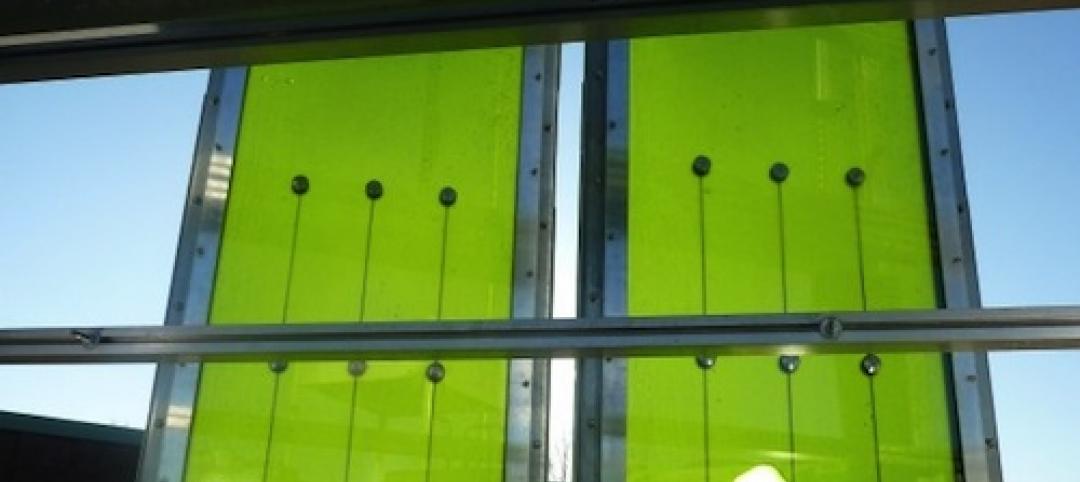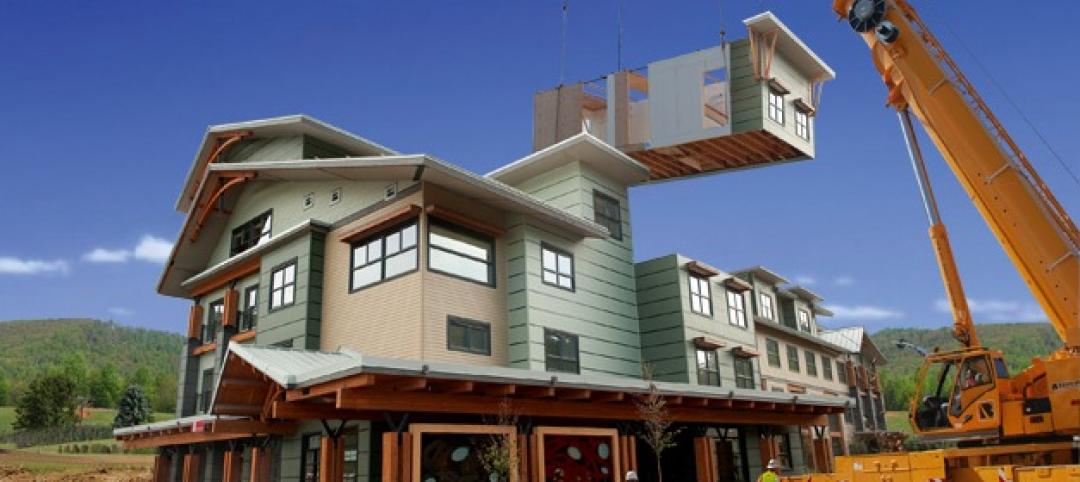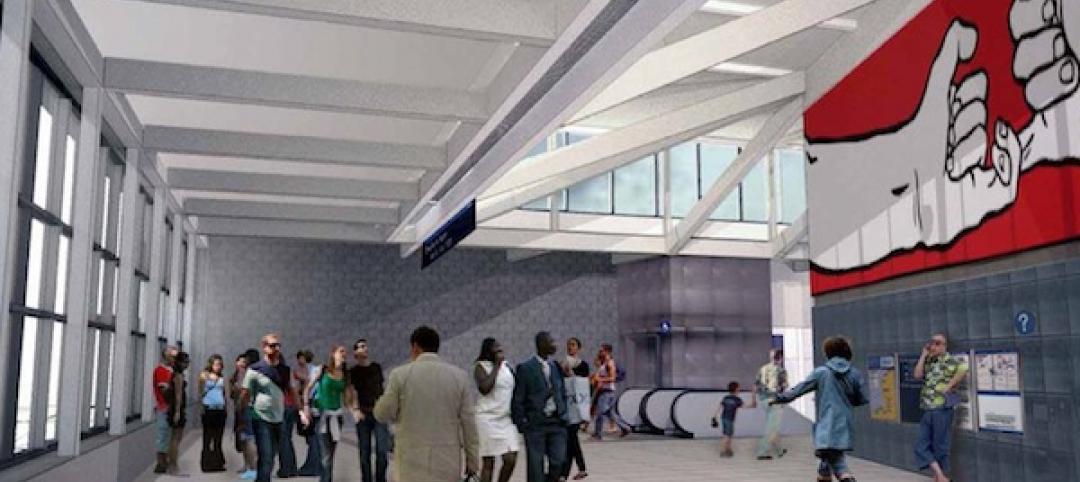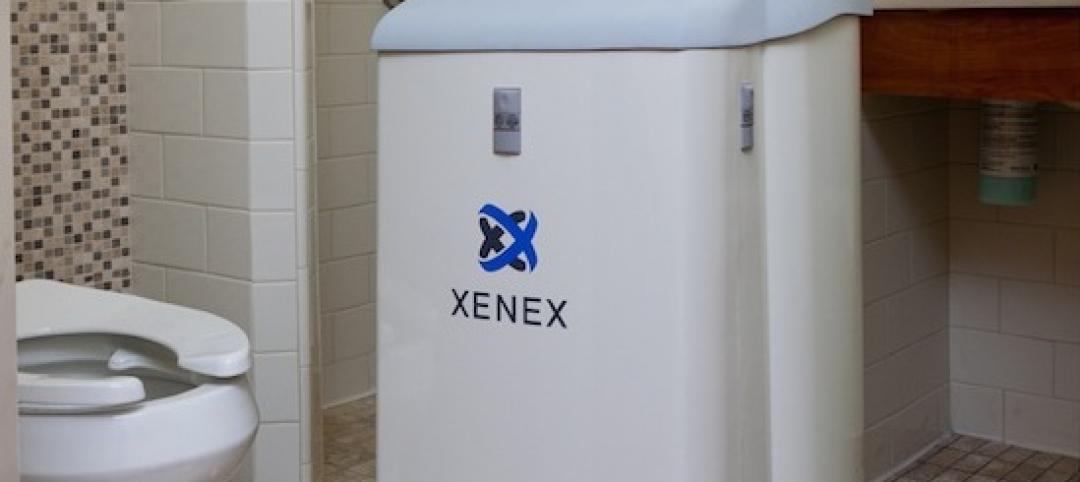American office workers love their jobs, and love them even more when the technology their companies use is viewed as being ahead of the curve.
A recent online survey of more than 1,000 office workers in the U.S., which Adobe conducted during two weeks last month, finds 70% saying they love what they do. And a remarkable 81% say that state-of-the-art technology was more important to them than an office’s design or on-site amenities.
Seven out of 10 U.S. workers believe technology improves the work-life balance, and 81% say technology helps them connect with colleagues more efficiently. Those respondents who think their company’s technology is “ahead of the curve” feel about twice as creative, motivated, and satisfied as respondents who work for companies with less-than-cutting edge technology.
The rub is that only 25% of the survey’s U.S. respondents think their company’s technology excels. Nevertheless, more than half (53%) expects technology to be handling more of their offices’ menial tasks—copying, filing, etc.—over the next two decades, even as 55% remain convinced their jobs could never be replaced by a machine.
In fact, there seems to be more than a hint of ambivalence about the benefits of technology among the 75% of respondents who are concerned that relationships and health suffer when people become to attached to their devices.
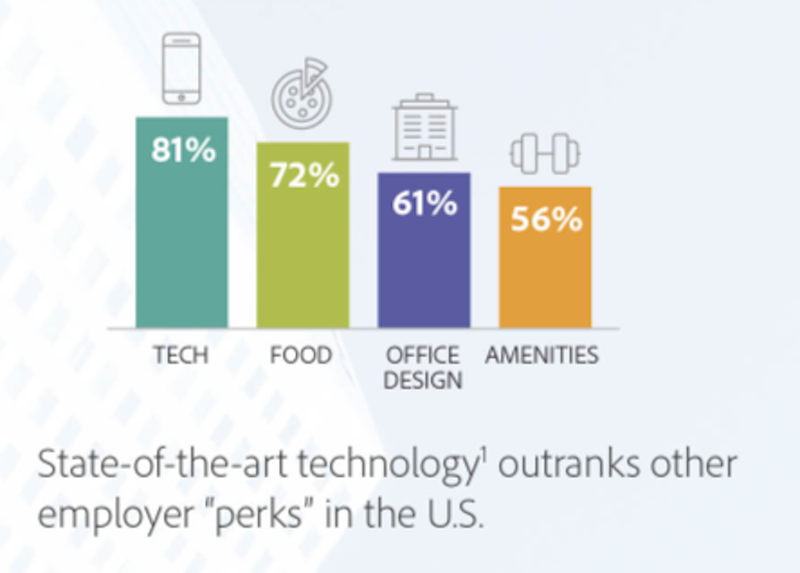
Technology trumps other office amenities in what keeps workers content. Image: Adobe's “Work in Progress” report.
The Adobe survey portrays an American workforce for which work and life are inseparable, almost to the point of obsession. More than half of the respondents say they’d keep working if they won the lottery. U.S. workers say they spend, on average, 78% of their waking hours during the work week and 41% of their days off thinking about their jobs. Indeed, 57% of respondents agree with the statement “work defines who I am.”
The desire to work is further punctuated by the finding that one in three U.S. office workers moonlights in jobs outside of his or her primary occupation, and that moonlighters are more likely to be happier and more optimistic than non-moonlighters.
However, 69% of U.S. workers also say they work multiple jobs because they need the money. Nearly three-fifths of American workers are likely to leave their jobs for a better opportunity. (That number is 50% even among people who say they profess love for their current job.)
Related Stories
| Mar 6, 2013
German demonstration building features algae-powered façade
Exterior of carbon-neutral demonstration building consists of hollow glass panels containing micro-algae "farms."
| Mar 4, 2013
Legendary structural engineer Gene Corley passes away at 77
CTLGroup, an expert engineering and materials science firm located in Skokie, Illinois, is saddened by the news that W. Gene Corley, Ph.D., S.E., P.E., Senior Vice President, died on March 1, 2013 after a brief battle with cancer.
| Feb 28, 2013
Novel multifamily solutions to be presented at New York Modular Construction Summit
The New York Modular Construction Summit will be co-hosted by the Modular Building Institute and Pratt Institute School of Architecture on May 16, 2013, in Brooklyn, N.Y.
| Feb 25, 2013
Turner employs rare 'collapsible' steel truss system at Seattle light rail station
To speed construction of the $110 million Capitol Hill Station light-rail station in Seattle, general contractor Turner Construction will use an unusual temporary framing method for the project's underground spaces.
| Feb 21, 2013
BD+C's 2011 White Paper: Zero and Net-Zero Energy Buildings + Homes
We submit our eighth White Paper on Sustainability in the hope that it will inspire architects, engineers, contractors, building owners, developers, building product manufacturers, environmentalists, policymakers, government officials, corporate executives, officeholders, and the public to foster the development of net-zero energy buildings and homes.
| Feb 18, 2013
Syracuse hospital using robots to reduce infections by 50%
Fast Company's Nina Mandell writes about how an early adopter of UV infection-control robotics—St. Joseph’s Hospital Health Center in Syracuse—is seeing positive results.
| Feb 8, 2013
5 factors to consider when designing a shade system
Designing a shade system is more complex than picking out basic white venetian blinds. Here are five elements to consider when designing an interior shade system.
| Feb 3, 2013
Electronic surveying improves accuracy on BIM-driven hospital project
A mechanical contractor combines an electronic surveying tool with a BIM model to make significant productivity gains in a large-scale hospital project.



